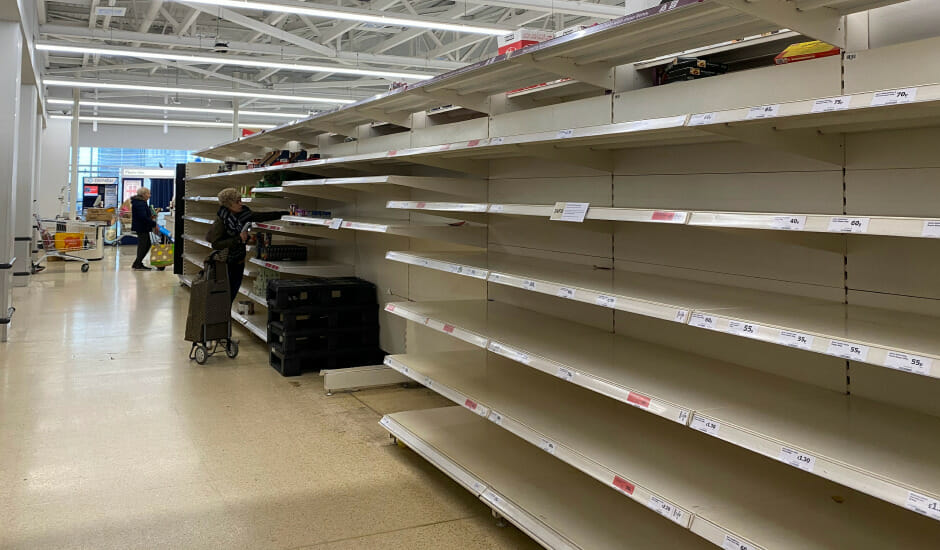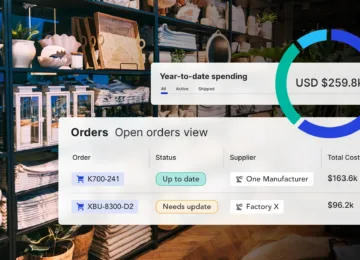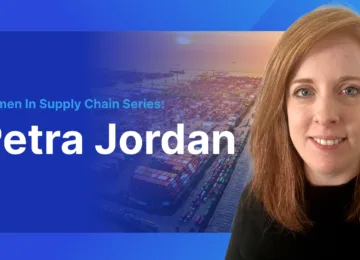As a business owner or retailer, you may think that a high demand for your products is a great thing — and it certainly can be. But when customer demand exceeds your inventory levels, you can run into serious supply chain issues: it slows down customer order fulfillment, increases lead time, and leads to shortages and longer wait times.
Thankfully, backordering is a way to help control stock levels and avoid these major disruptions to your inventory management system. Managing backorders can help businesses prepare for large volume orders ahead of time, boosting customer satisfaction in the process.
In this article, we’ll explore what backordering is and how you can use it to satisfy your customer base while protecting your business’s bottom line. We’ll also cover the benefits and drawbacks of backordering, and give you some actionable best practices that you can implement within your organization today.
What Is Backordering?
Backordering refers to the process of continuing to take orders for a product when the item is out of stock. A backorder tells suppliers and retailers that the customer demand for a product exceeds the current inventory and can be used to help create a backlog of products.
If you allow a lack of inventory to stop you from taking orders, you risk losing customers to your competitors and damaging your company’s reputation. Accepting backorders allows you to stay on track to your projected revenue and amplifies demand for your products.
How Backorders Work
In order for backorders to be successful, you need to have a strong inventory management system and supply chain management process. This allows you to track and fulfill your backordered products and ensure that your customers are satisfied. The backordering process works the same way whether the product is completely unavailable, in a different warehouse, or is actively under production.
When an item goes out of stock, backorders go into your inventory management system. These backorders then convert into a purchase order. The purchase order then continues down the supply chain to the respective vendor who supplies the product. The vendor can process and fulfill the purchase order and send the items to your warehouse. Once the items reach the warehouse, they are matched with the sales order in the inventory before being shipped out and delivered to your customers.
Common Reasons for Backordering in a Supply Chain
In an ideal world, you would always have enough stock on hand without having any carrying costs, overstocking, or other difficulties with inventory control — but that’s not the world we live in. Backordering crops up within a supply chain for a number of reasons, and we’ll break down some of the most common reasons below.
Faulty Forecasting or Miscalculations
Forecasting is the practice of trying to predict future product demand, usually based on historical data and data trends. Forecasting helps business owners know how much product they are likely to need, and allows them to adjust their manufacturing schedules to match. If forecasting is inaccurate or has been miscalculated, it can lead to a shortage of stock.
Unusual Demand and Supply Issues
Even with accurate forecasting, there can be unexpected demands for products that manufacturers are not ready to supply retailers with. Sometimes a marketing campaign works exceptionally well and a product goes viral, or other external factors like weather might affect customer demand and upset the supply chain.
Problems With Warehouse Management
Managing your warehouse efficiency is an important part of ensuring that your inventory levels are stable. When there are problems with your warehouse management systems (including errors made by employees), it can lead to lost inventory, inaccurate reporting, and bad data — which leads to poor decision making and miscalculated forecasting.
Delayed Orders
Many businesses in areas across the supply chain are dealing with serious order delays, which further impacts other suppliers and buyers along the supply chain. When stock doesn’t arrive at a destination on time, it can slow down the shipping or production processes and lead to a rise in backorders while further disrupting the supply chain.
The Pros and Cons of Backorders
Now that you know what a backorder means, let’s look into some of the benefits and drawbacks of allowing backorders within your order fulfillment processes.
Pros of Backorders
- Maintains your customer base during times of uncertainty
- Offers better insights into your purchasing trends
- Increases the demand for (and value of) your products
- Avoids overstocking and wasted storage space for excess inventory
- Less waste from damaged or obsolete items
Cons of Backorders
- Increases lead time between placing an order and the customer receiving the order
- Cancellations from customers who don’t want to wait for a resupply of out of stock products
- Drops your market share when customers leave
- Adds stress to your inventory management processes
5 Best Practices for Reducing Backorders
While backorders can help lower customer churn somewhat, the ultimate goal is to reduce (or eliminate) the number of backorders in the first place. This helps ensure that customers get what they want, when they want it. Not only does reducing backorders increase customer satisfaction, but it also reduces disruptions to your supply chain, which keeps your operations running smoothly.
Here are a few best practices to help you maintain stock levels and improve how backordering works in your business.
1. Analyzing Previous Buying Patterns
Your historical data and previous buying patterns are essential to reducing backorders. When you have a better understanding of your data, you are better equipped for forecasting calculations. If you notice that certain conditions or times of year historically mean that there is an increase in orders, you can plan more accurately, stock more inventory, and avoid getting into a backordering situation.
2. Keep an Open Line of Communication With Your Supplier
Strong supply chain communication helps you quickly fulfill your backorders and set up a timeframe for restocking items that are currently in demand. When your backorders come as a shock to your suppliers, it can lead to undue stress and tension. When you have a good relationship with your suppliers and strong lines of communication, you can work together to manage backorder situations and give accurate updates to your customers.
3. Maintain a List of Multiple Suppliers
Having a diverse portfolio of suppliers can help you handle your backorders quickly. When there are unexpected surges in customer demand, you can turn to another supplier to help you fill your purchase orders and restock your shelves to avoid ongoing backordering issues. This can also help you expand your supply chain overall, and have multiple options when supplier issues come up.
4. Increase Your Stocking Capacity
While all businesses want to be efficient with their ordering and avoid having an excessive amount of stock sitting around in warehouses, it can be helpful to build up a safety stock. This is when you stock slightly more than what your forecasting recommends. When you have the space for it, having extra items on hand can help you avoid having to turn to backorders when there is an unexpected demand for a product.
5. Create Partnerships With Professional Fulfillment Companies
While you certainly can manage your fulfillment by yourself, there are benefits to partnering with a third-party company that solely specializes in order fulfillment. These companies hold your product for you in their warehouses and have advanced techniques to supply customers with orders when there is an increase in customer demand. They will also have the most advanced tools and platforms to help you with your inventory management.
Stay Ahead of Backordering With Anvyl
When your customer demand exceeds your inventory, the result is backordered items. Backordering can affect the entire supply chain, from your ecommerce store to your raw material suppliers, so it’s crucial to have a solid fulfillment process in place. With good inventory management software and systems, you can keep track of your business’s backorder rate and be prepared for shortages.
Anvyl is a platform that helps small businesses streamline production processes and manage supplier relations. To learn how Anvyl can help you, schedule a demo and test out our system for yourself.



